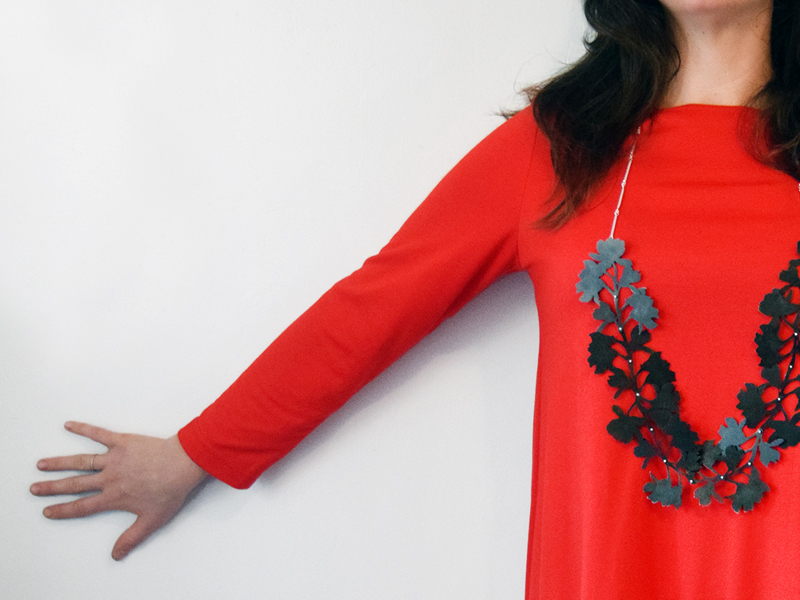
As a former marine biology major and current jewelry artist, Liz Clark finds inspiration in flowers, which accompany us through life events and speak for us when words fail. For her exhibition at Heidi Lowe Gallery, Clark counter-intuitively pairs the tender blooms with hardened materials and adroitly adapts floral forms into kinetic jewelry. In this interview, we talk about how flowers, however ubiquitous, can be an everlasting source of wonder.
Olivia Shih: What is it that draws you to jewelry? Could you share your background with us?
Liz Clark: I started my college career studying marine biology, but after two years my creative juices needed an outlet. I transferred to Virginia Commonwealth University and found my way to the Crafts/Material Studies program. I focused on metals, studying under James Meyer and Susie Ganch.
Since graduating with my BFA, I’ve had a myriad of jobs both in and out of the field. All of the job experiences I’ve had are priceless efforts toward figuring out what I want from my work life. I’ve only started focusing on my own work the past three years, but it has been truly rewarding, not only because of the freedoms that come with being your own boss but the friends and experiences I have gained along the way.
In your statement, you quote Elizabeth Wirt on flowers: “Flowers are more than objects of mere admiration, they are flowers of rhetoric and speak their feelings with far more tenderness and force than words can describe.” Do you have a memory with flowers that illustrates these words?
Liz Clark: Nearly every marriage ceremony, funeral, baptism, anniversary, and holiday I have experienced has had flowers present. All of these moments are strung together with flowers as a constant. They are colorful, aromatic reminders that trigger memories. When I smell roses, I think of my first babysitter. Gladioli remind me of my aunt, and black-eyed Susans remind me of driving through the country roadsides of Pennsylvania in the summer.
Elizabeth Wirt’s quote explains flowers’ unique capability of expressing our emotions in certain ways that we would otherwise be unable.
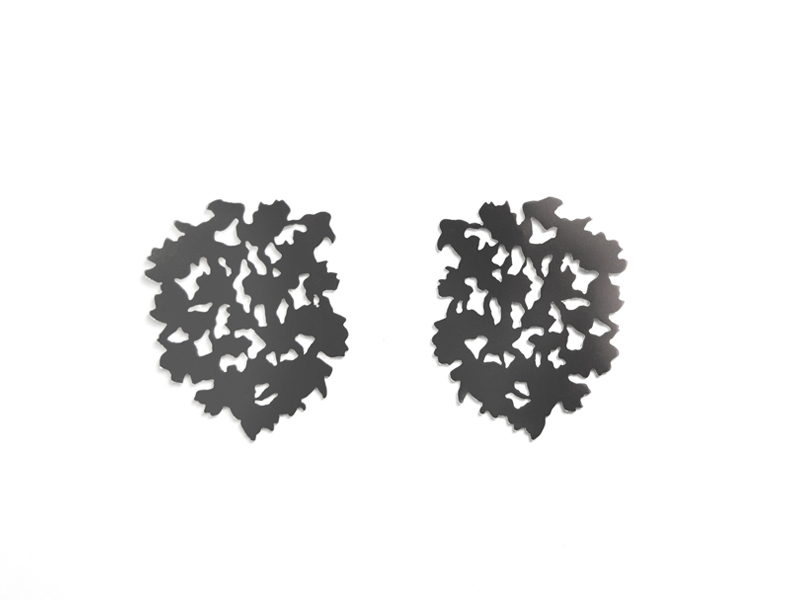
Floral and nature themes are often popular in the metalsmithing world, to a point where these themes have become a little trite. What is it about your approach to flowers that makes your jewelry unique?
Liz Clark: Floral and nature themes are no more trite in jewelry than they are in any other facet of art. These themes are continually re-addressed because they are relatable across culture and gender. There is never a shortage of inspiration due to our profound respect and awe of nature’s capabilities.
My work has kinetic elements that build a relationship between the wearer and the work. The jewelry relies upon the wearer for movement that sets the kinetic elements in motion. Without the wearer, the work remains dormant. It is a symbiotic relationship.
In this exhibition, you reimagine the soft and tender language of flowers in hard steel, silver, and stone. Why did you choose to work in steel, which is not typically a metal used in jewelry?
Liz Clark: I liked the idea of working with steel to coincide with the title of the show. Besides some blacksmithing, I haven’t really worked with steel and I was excited to take on a new material. Normally I work with sterling, so it was a challenge that I both appreciated and struggled with. Learning the nuances of a new material forced me to reconfigure designs and troubleshoot new methods of construction.
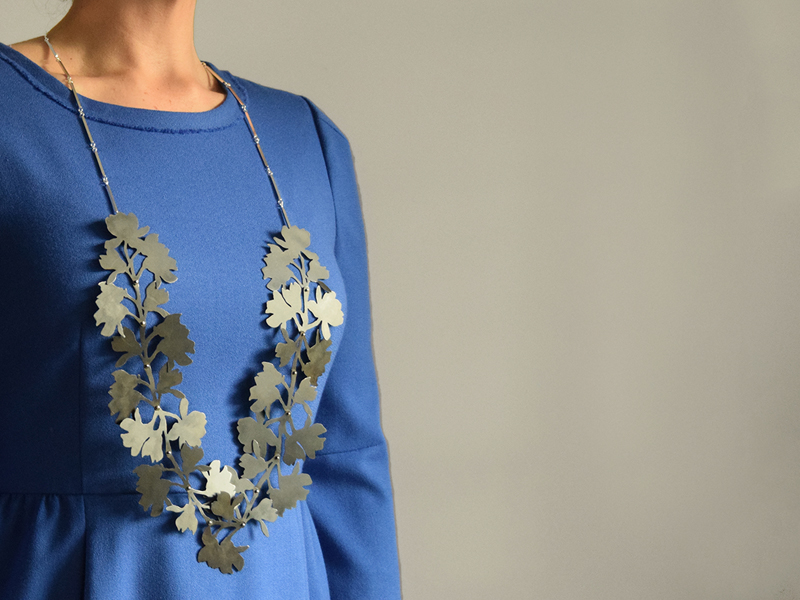
You state that Steel Magnolia “refers to a woman who exemplifies both traditional femininity as well as an uncommon fortitude.” Who are the real-life steel magnolias in your life?
Liz Clark: There are so many wonderful female influences I draw upon in my personal and professional life. The most influential to me are women in our field who have carved a way for themselves with their work, business strategies, support, and encouragement for other women. It’s both inspiring and humbling. If I had to name a few, Myra Mimlitsch-Gray, Lola Brooks, Caroline Gore, and Kerianne Quick come to mind. They all have an unparalleled dedication to what they do and a presence in the field that is hard to ignore.
How did this exhibition, Steel Magnolias, come to life? Did Heidi, the owner of Heidi Lowe Gallery, contact you and April Wood with the concept? Did you and April work together?
Liz Clark: Heidi invited April and I to have a joint show in the gallery. I admire April’s work and all that she has done with the Baltimore Jewelry Center, so I was very excited to participate with her on this project. After much discussion we both landed on the title Steel Magnolias. Since we are both from the South and incorporate floral motifs in our work, we felt that the title seemed applicable. It also makes reference to ideas of powerful female figures who are both fragile and strong.
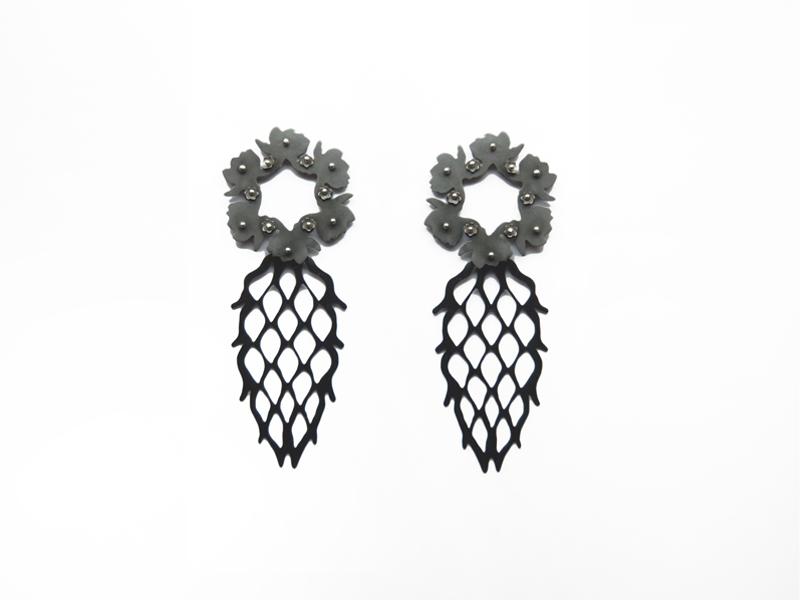
You currently live in Providence, Rhode Island. Could you describe your environment for us? Does your environment seep into your work?
Liz Clark: Our studio is in our apartment, so the commute is very convenient. We live in a residential neighborhood that provides access to many public parks and gardens. I enjoy these small curated collections of plants and flowers and often use them as inspiration when composing my work.
You’re married to a fellow jewelry artist, Arthur Hash, who is known for integrating digital fabrication technologies into his work. What is it like, living with another jeweler? Do you ever butt heads in the studio? Do you learn from one another in it?
Liz Clark: Arthur and I have been together for 10 years. Our professional lives have developed alongside our personal lives, and we have learned how to manage the two. There are definite advantages to having a partner in the same field. We can relate to each other easily about studio issues and are mutually supportive in stressful situations. At the same time, our aesthetics and the way we work are very different. He mainly uses the computer to make his work while I am very hands on. These differences allow us to keep our individual identities within the field and can provide alternate points of view that help form our work.
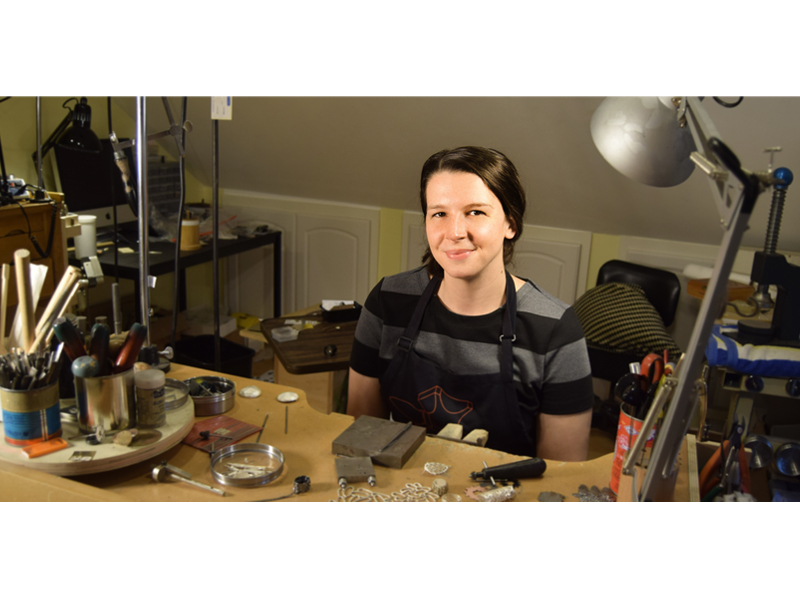
We rarely work in the studio together. I think it’s hard for either of us to concentrate so we tend to give each other space. Most of our head-butting in the studio comes from me making a mess and taking over every inch of space. I work better in chaos and Arthur has to be very organized.
I do have to say that the tool sharing is amazing! Shopping for Christmas and birthday gifts is easy since we both go to the dog-eared pages of the tool catalog for ideas.
Do you have any new projects on the horizon? Do you think you will be exploring floral themes for many years to come?
Liz Clark: I do not feel that I have exhausted the floral motif. I hope to continue using nature as a theme, shifting the focus microscopically to find patterns and form. I plan to make larger pieces that would push me out of my comfort zone and challenge me to make nonwearable work.
Have you heard, seen, or read anything that fascinated you recently? Could you share a few with our readers?
Liz Clark: Recently, I have been reading The Invention of Nature: Alexander von Humboldt’s New World, by Andrea Wulf. Humboldt was a true Renaissance man and it has been a fascinating read so far. He was a big influence on Emerson, who is one of my favorite writers. I’m also reading A History of Mourning, by Richard Davey, 1890. The Public Domain Review has an extensive online library of books and images dating back to the 16th century. PDR is my go-to site when I am feeling itchy for inspiration or something to read.
Thank you.
The works in this exhibition are priced between US$220 and US$900.
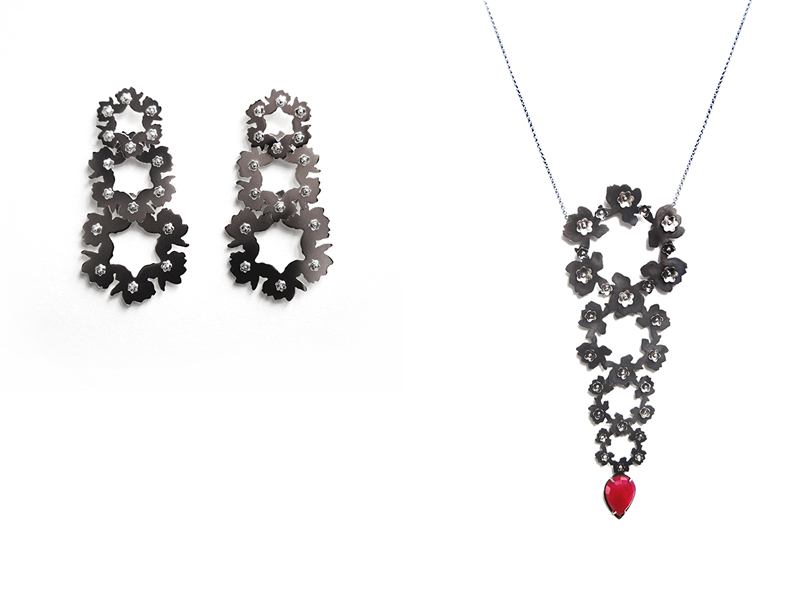
INDEX IMAGE: Liz Clark, Steel Laurels, 2016, earrings, steel, sterling silver, 44 x 25 mm, photo: Arthur Hash




